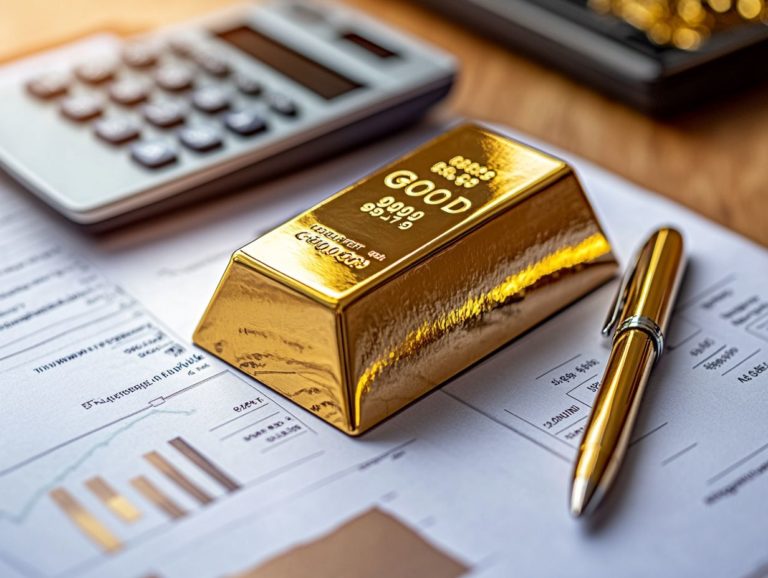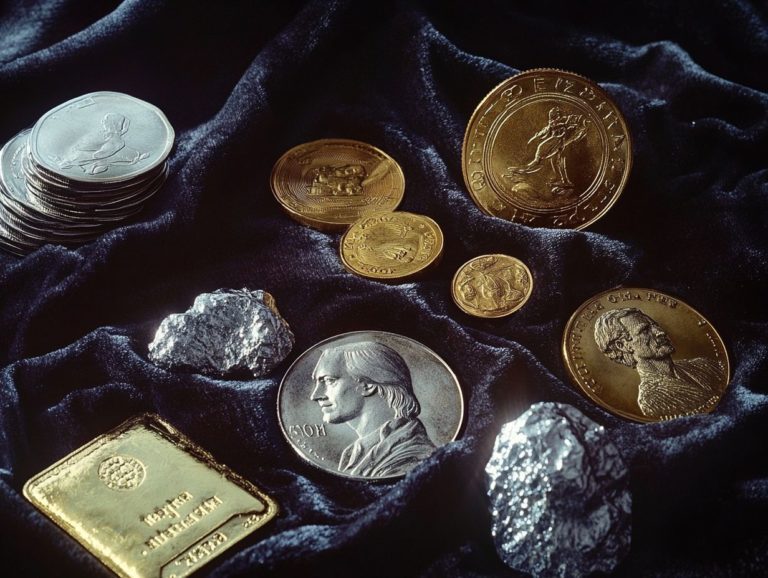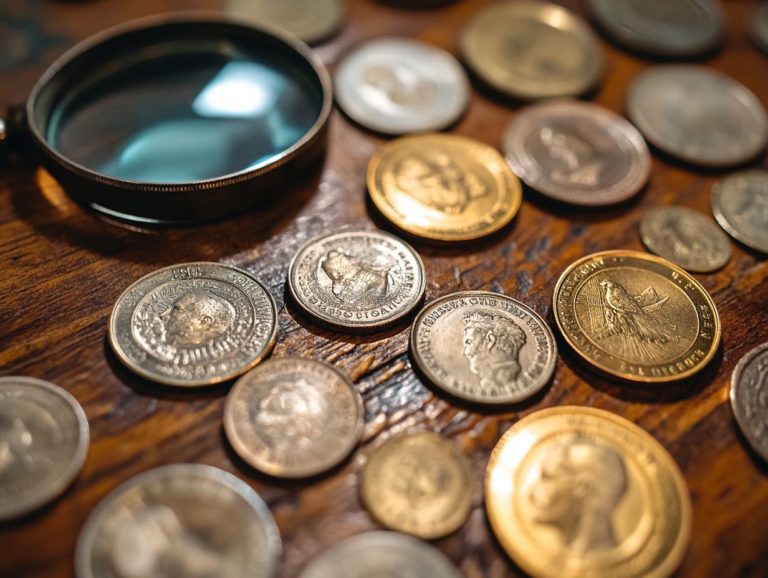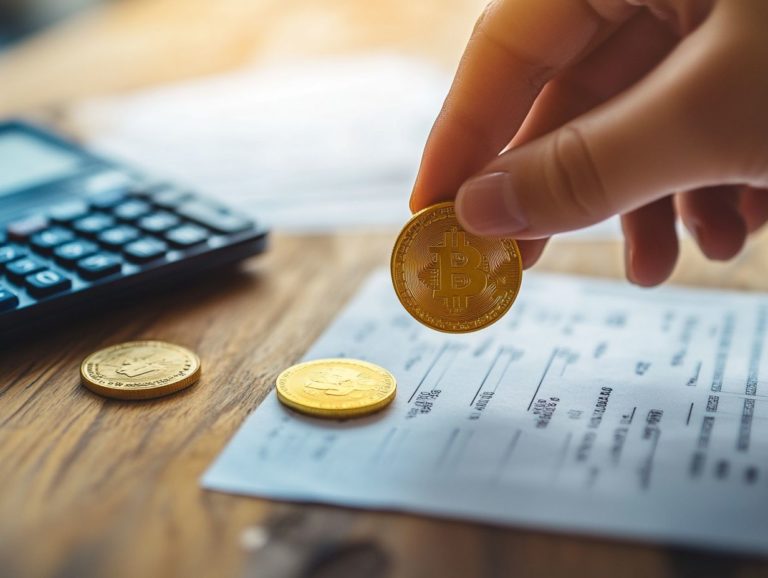How to Understand Precious Metal Trends Over Time?
Navigating the world of precious metals is an exciting journey. From gold to silver, these valuable metals are influenced by many factors such as economic conditions and political changes.
This guide explores precious metal trends. We analyze historical patterns and current market shifts to help you make informed investment decisions.
Join us to uncover the essential elements of these trends and their significance for investors like you!
Contents
- Key Takeaways:
- What are Precious Metal Trends?
- Factors Influencing Precious Metal Trends
- Historical Trends of Precious Metals
- Interpreting Current Precious Metal Trends
- Strategies for Investing in Precious Metals
- Predicting Future Precious Metal Trends
- Frequently Asked Questions
- What are the main factors that affect precious metal trends over time?
- How can I track precious metal trends over time?
- Why is it important to understand precious metal trends?
- What are some common patterns in precious metal trends over time?
- How can historical data help in understanding precious metal trends over time?
- What are some potential risks associated with investing in precious metals?
Key Takeaways:
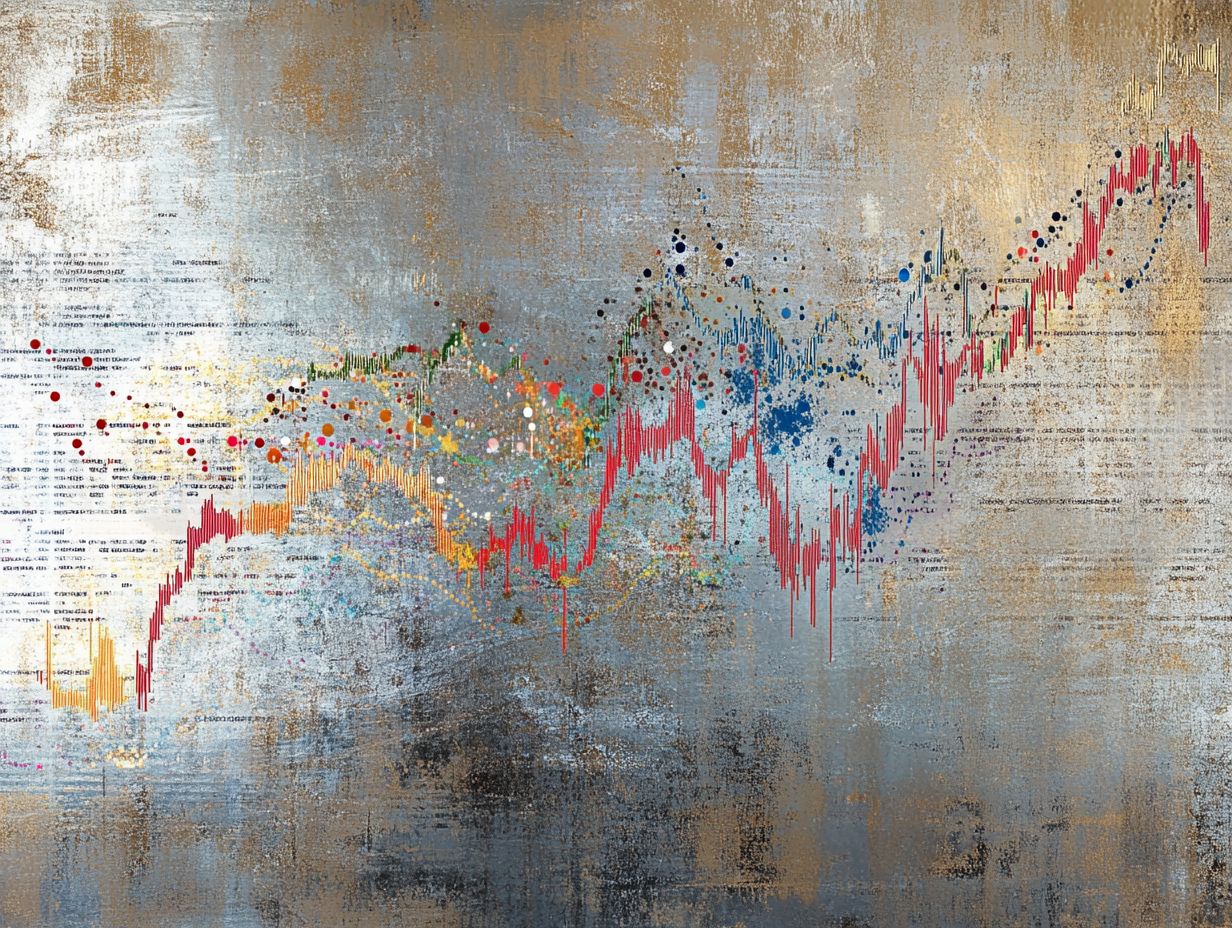
- Precious metal trends are influenced by economic, political, and supply-demand factors.
- Historical data can offer insights into current precious metal market trends.
- Diversification, risk management, and investment timelines are key strategies for investing in precious metals.
What are Precious Metal Trends?
Precious metal trends reflect the changes in valuable metals like gold, silver, platinum, and palladium. Understanding these trends is crucial because they are shaped by factors like economic indicators, geopolitical tensions, and investor behavior.
These factors affect the metals’ roles as an inflation hedge and a store of value. Recently, the growing demand for these metals has led many investors to consider them as solid investment options whether through physical bullion, exchange-traded funds (ETFs), or mutual funds.
Factors Influencing Precious Metal Trends
Several key factors shape the trends of precious metals, affecting their values in the global market. Economic elements, such as government monetary policies and key economic indicators, impact market conditions and your investment decisions.
Political factors, including geopolitical tensions and political stability, create uncertainty. This uncertainty often increases demand for precious metals as a safe haven.
The classic balance of supply and demand also dictates price movements, making the market dynamic and full of opportunities.
Economic Factors
Economic factors play a vital role in precious metal trends. Changes in interest rates, inflation rates, and economic growth can significantly influence how these metals are viewed.
For instance, when inflation spikes, investors often turn to gold and silver as safe assets that hold their value. History shows that during periods of high inflation, such as the late 1970s, demand for gold surged.
Fluctuations in interest rates can also impact the appeal of precious metals. When rates are low, the cost of holding these non-yielding assets decreases, making them more attractive.
Political Factors
The precious metals market is greatly affected by political dynamics. Events like conflicts, trade wars, and government policy changes can cause significant shifts in investor behavior.
During the 2008 financial crisis, geopolitical uncertainties drove many to gold, causing its price to soar. Similarly, unrest in the Middle East often leads to increased demand for both silver and gold.
These trends illustrate how investors react to global events, using these metals not just as financial safeguards but also as indicators of political sentiment.
Explore investment opportunities in precious metals today to enhance your financial portfolio!
Supply and Demand

The principles of supply and demand shape market trends for precious metals. When demand for these metals rises for industrial use or investing, it can tighten supply and enhance value.
For example, platinum demand has surged due to its crucial role in advanced electronics and catalytic converters. As technology advances, industries compete for this metal, which is vital for durability and efficiency.
Strikes in key mining regions or new reserve discoveries can cause significant price changes. These events highlight how supply and demand create volatility that impacts investors and manufacturers alike.
Understanding these dynamics is crucial for anyone navigating the precious metals market.
Historical Trends of Precious Metals
Historical trends reveal the evolving economic value of precious metals in financial markets. Notable fluctuations occurred in February 1980 and April 2001 when prices surged due to economic crises.
Financial media greatly influences how investors view these assets, reflecting broader market dynamics.
Comparison of Past and Present Trends
Comparing past and present trends shows significant shifts in market conditions and investor behavior. Economic and geopolitical events drive this change.
During the 2008 financial crisis, investors rushed to gold, causing dramatic price spikes. Today, silver and palladium are gaining momentum due to their roles in renewable energy and electric vehicles.
This shift shows that investors are recognizing the dual-purpose nature of these metals, enhancing their significance beyond traditional investments. The focus on sustainability and ethical sourcing is also influencing buying behaviors.
Interpreting Current Precious Metal Trends
Interpreting current trends in precious metals requires understanding market fluctuations and their implications for financial stability. This is especially relevant with potential liquidity issues.
Today s markets are influenced by economic indicators and geopolitical tensions, leading to unpredictable price movements. Adapting to these dynamics is crucial for effective navigation.
Understanding Market Fluctuations
Understanding market fluctuations in precious metals is essential for you as an investor. These changes are driven by numerous economic indicators and the interplay of supply and demand.
For instance, when inflation rises, many investors turn to precious metals as a hedge, driving prices up. Reports on mining output can significantly sway market sentiment; a decrease in gold output may signal scarcity and lead to price increases.
Geopolitical tensions often create uncertainty, prompting investors to flock to safe-haven assets like silver and gold. Understanding these variables is key to navigating the precious metals market effectively.
Strategies for Investing in Precious Metals

Crafting effective strategies for investing in precious metals is essential for maximizing returns while managing risks. Employ diversification techniques by incorporating a variety of precious metals gold, silver, platinum, and palladium into your portfolio.
Familiarizing yourself with different investment vehicles, such as physical bullion, exchange-traded funds (ETFs), and mutual funds, can significantly elevate your approach to risk management in this ever-evolving market.
Diversification and Risk Management
Diversification is key to a strong investment strategy in precious metals. By spreading your investments across gold, silver, platinum, and palladium, you can reduce risks tied to market volatility.
Gold often serves as a safe haven during downturns, while silver is more affected by industrial demand. Platinum and palladium have unique applications, offering their own advantages.
This strategic allocation enhances your portfolio’s resilience.
Long-term vs Short-term Investments
Weighing the merits of long-term versus short-term investments in precious metals is crucial for aligning your financial goals with current market conditions. Long-term investments typically emphasize economic stability and the potential appreciation of assets like gold and silver.
Short-term strategies can capitalize on rapid price fluctuations driven by immediate events and market dynamics. If you’re looking to secure your wealth, long-term holdings can act as a safe harbor during economic downturns, as these metals have a history of retaining value even in volatile markets. Additionally, understanding how to analyze silver market sentiment can enhance your investment decisions.
During times of inflation or geopolitical tensions, precious metals often experience a surge, rewarding those who adopt a patient investment approach. For a deeper insight, understanding the global precious metals market can be invaluable. Conversely, short-term investing offers the allure of quick returns by leveraging timely market trends, such as seasonal demand spikes for silver when jewelry production ramps up.
However, this strategy comes with heightened risks; sudden market shifts can lead to significant losses for those who aren’t prepared. Understanding the nuances of these investment strategies is vital for anyone navigating the intricate landscape of precious metals.
Predicting Future Precious Metal Trends
Predicting future trends in precious metals requires blending expert insights with sophisticated forecasting techniques that delve into market dynamics and economic conditions.
Consider factors such as geopolitical tensions, supply chain disruptions, and shifts in investor behavior, as each of these elements significantly influences the outlook for precious metals in the years ahead.
Expert Opinions and Forecasting Techniques
Expert opinions and forecasting techniques provide invaluable insights into market trends and the potential trajectory of precious metals. Analysts employ various methods, including trend analysis and statistical models, to decode investor behavior and anticipate possible price movements in this unpredictable market.
For instance, trend analysis helps spot patterns in historical price data, offering hints about future fluctuations. Statistical models take it a step further by using data analysis to unravel the complex relationships between economic indicators and precious metal prices. To gain deeper insights, learning how to understand precious metal spot prices can ensure forecasts are calibrated with remarkable precision.
Sentiment analysis captures the market’s mood by examining news reports, social media discussions, and dialogues within the investment community, revealing the underlying bullish or bearish sentiments.
When combined, these techniques create a well-rounded perspective on how shifts in global economic conditions such as inflation rates or central bank policies might sway investor decisions within the precious metals arena.
Frequently Asked Questions

What are the main factors that affect precious metal trends over time?
- Global economic conditions
- Supply and demand
- Inflation rates
- Geopolitical events
The main factors that affect precious metal trends include the items listed above.
How can I track precious metal trends over time?
You can track precious metal trends by using charts and graphs, analyzing data from reputable sources, and staying updated on market news and events.
Why is it important to understand precious metal trends?
Understanding precious metal trends empowers you to make smarter, timely investment decisions, identify potential buying or selling opportunities, and manage risk in your portfolio.
What are some common patterns in precious metal trends over time?
Some common patterns include long-term upward or downward trends, short-term price swings, and periods of volatility in response to economic or political events.
How can historical data help in understanding precious metal trends over time?
Historical data provides valuable insights into past trends and patterns, allowing for more accurate predictions and projections for future trends in the precious metal market.
What are some potential risks associated with investing in precious metals?
Potential risks include market volatility, supply and demand fluctuations, currency exchange rates, and political instability in producing countries.
Curious about what drives precious metal prices? Stay informed and ready to seize opportunities in the precious metals market!










